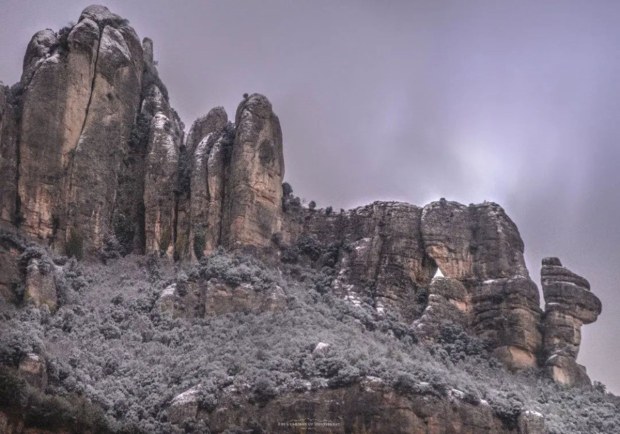Perched on the peaks of the Montserrat, the Benedictine abbey of Santa María de Montserrat (literally, the “Serrated Mountain”) has drawn pilgrims since its very foundation in the early 11th century. And imposing as the monastery might be, part of the mountain’s spiritual heritage lies in the many hermitages scattered around it, each with its own unique allure. In fact, some of these hermitages are older than the monastery, and somehow paved the way for its foundation.
The famed Hermitages of Montserrat are a collection of small, isolated monastic cells in the vicinity of the monastery that have been used by monks for contemplative and eremitic life for centuries. Scattered as they are throughout the mountain, they are only accessible by foot – although some of them are pretty close to the main monastery, and can thus be reached after a rather short hike.

Some of them are quite small, with only enough room for a bed and a small altar. And still, these hermitages were expected to be self-sufficient, strictly following the Benedictine rule. All of them include a small garden (where monks would work, either keeping a vegetable patch or a medicinal herbs garden) and a source of running water. Simple and austere, these edifications allowed monks to live their calling accordingly. Many of these hermitages were also used as retreats by monks from the Benedictine abbey.
Some of these hermitages have been used by notable figures throughout the centuries. One of them, St. Ignatius of Loyola, spent time in one of these hermitages in the 16th century, as he was going through a deep spiritual transformation. In fact, the Monastery of Montserrat is part of the legendary Camino Ignaciano, a pilgrimage road that goes from Azpeitia, the native town of St. Ignatius, to Manresa, following the steps of the popular Basque saint. As this road grew in popularity, it ended up earning a place of its own among other, more famous pilgrimage routes in Europe, such as the Camino de Santiago and the Via Francigena.
Today, only two of these hermitages are still used by monks living away from the main monastery. All other hermitages are not inhabited anymore, and are thus open to visitors. When visiting Montserrat, try to go on a hiking tour to discover them.



